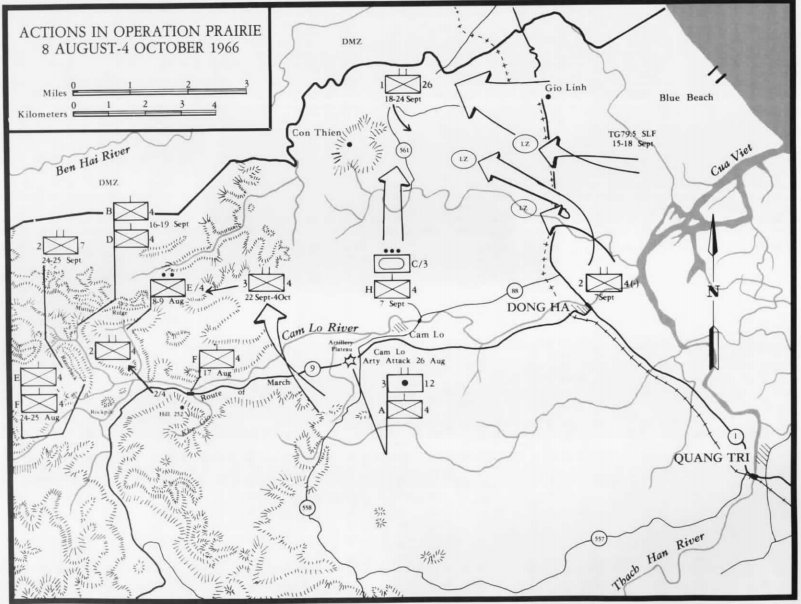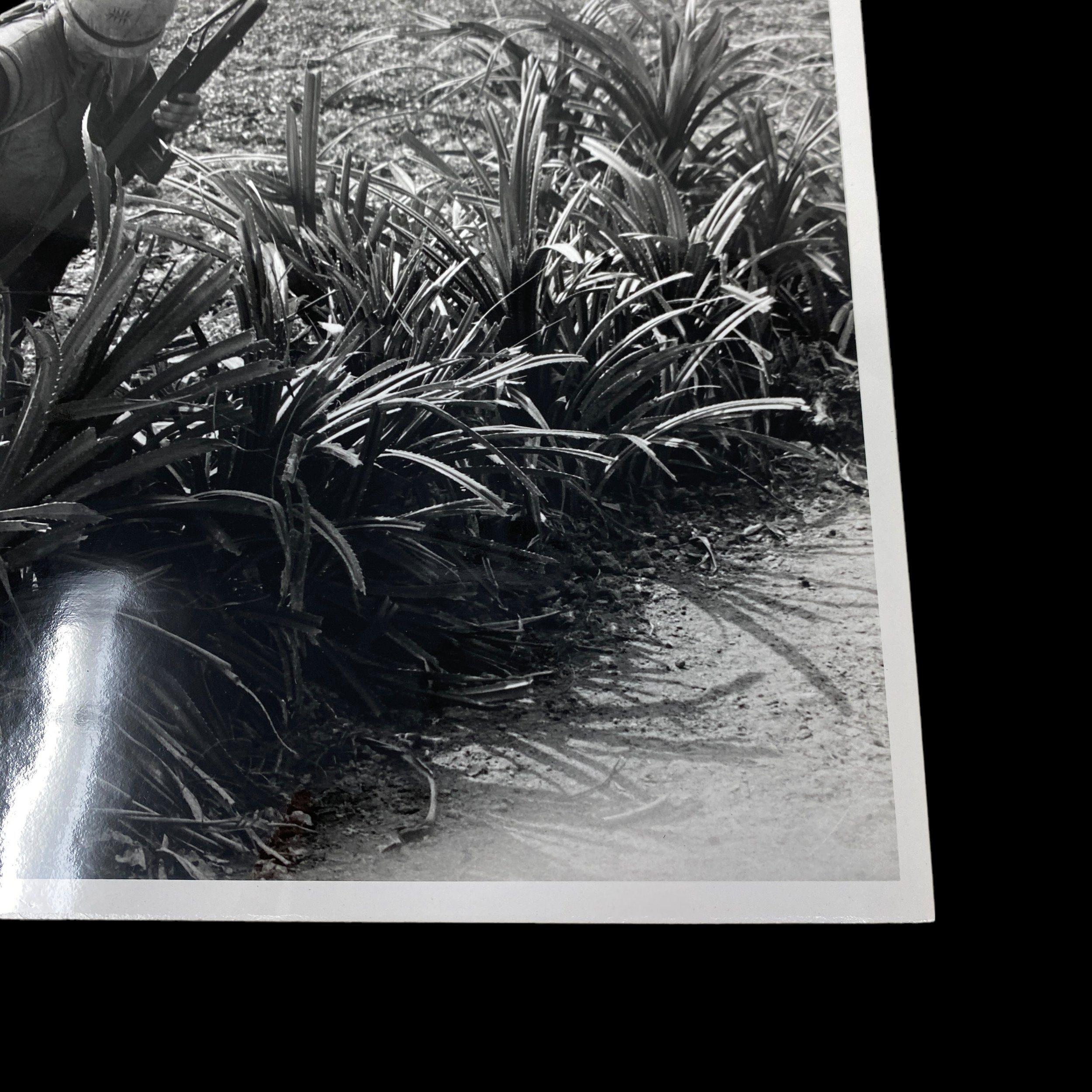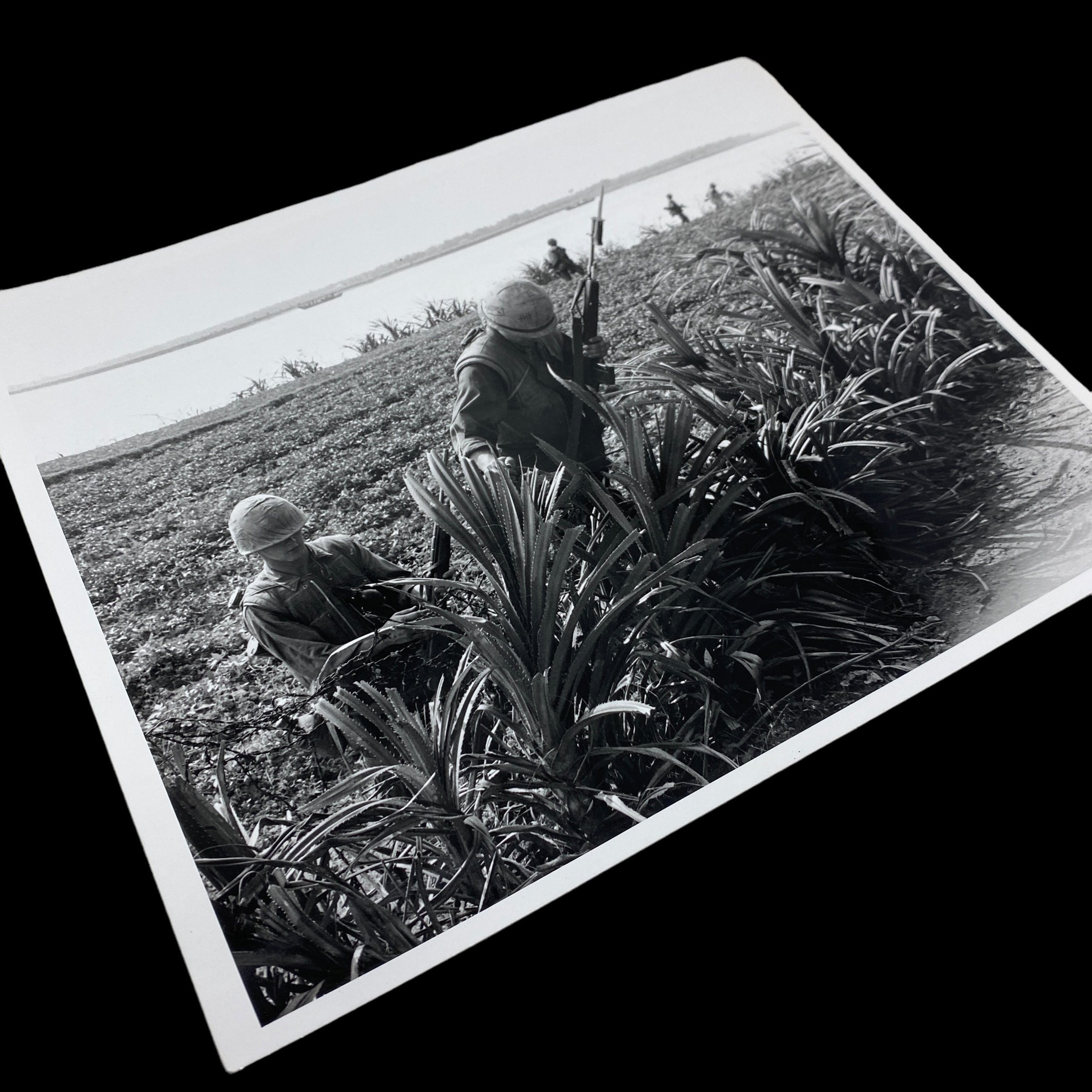VERY RARE! March 1967 "Operation Beacon Hill." 3rd Marines Sgt. Welmer 'TYPE ONE' Original Defense Department (USMC) Combat Photograph*











VERY RARE! March 1967 "Operation Beacon Hill." 3rd Marines Sgt. Welmer 'TYPE ONE' Original Defense Department (USMC) Combat Photograph*
Comes with a hand-signed C.O.A.
Size: 8 x 10 inches
This original and museum-grade Vietnam War is an extremely rare TYPE ONE (Defense Department) 3rd Marine Division combat photograph taken in March 1967 by Sgt. Welmer during Operation Beacon Hill.
On 20 March the PAVN hit Firebase Gio Linh with mortars, rockets and artillery fire and they continued to hit Gio Linh and Con Thien almost daily for the next two weeks. On 21 March the PAVN ambushed a supply convoy 300m south of Gio Linh destroying six trucks but they were driven off by the convoy's security escort and Company I, 3rd Battalion, 4th Marines which was providing base security at Gio Linh. That same day 3rd Battalion, 3rd Marines and 1st Battalion, 9th Marines completed a seven-day sweep 6 km (3.7 mi) north of Camp Carroll finding 125 rockets and numerous rocket and mortar sites. From 20–28 March BLT 1st Battalion, 4th Marines conducted Operation Beacon Hill around Firebase Gio Linh, killing 334 PAVN for the loss of 29 Marines killed. On 22 March 3/3 Marines and 1/9 Marines began a patrol from Đông Hà Combat Base north towards Con Thien. On 24 March the 1/9 Marines engaged an entrenched PAVN force southeast of Con Thien and after two hours of fighting the PAVN withdrew leaving 33 dead. Meanwhile, 3/3 Marines engaged an entrenched PAVN company forcing them to withdraw leaving 28 dead. The two Marine battalions pursued the retreating PAVN losing contact with them on 26 March as they crossed the DMZ.
Type One photographs are very rare as they are the first high-gloss prints from original combat negative camera images and contain the original marker stamps on the backside noting the photography information. Original government Vietnam War Defense Department (USMC) combat photographs are very rare and rarely come to the public sector.
On the backside of the TYPE ONE combat photograph, it notes “Marines of “L” Company, 3rd Battalion, 4th Marine come up a draw in the village of Gio Do during operation Beacon Hill north of Đông Hà, Vietnam.”
Operation Beacon Hill, 20 March - 1 April 1967:
In the spring of 1967, III MAF faced a growing Communist capability to overrun the Marine base at Gio Linh and its appealing prize of four 175mm guns. Units of the 3d Marine Division committed to Operation Prairie remained thinly spread over an extremely large area. Still more unsettling, intelligence sources reported five NVA infantry battalions in or near the eastern portion of the DMZ.
In response to this threat, the SLF, offshore since 14 March, went into action once more on the 20th. Lieutenant Colonel Westerman’s BLT 1/4, and HMM-363 commanded by newly-promoted Lieutenant Colonel Day, the former squadron executive officer, landed on the coast north of the Cua Viet. Operation Beacon Hill had begun.Contact was light until 21 March when the BLT engaged about 80 NVA troops, killing 14. The next day the battalion made contact again between Gio Linh and Con Thien. After a stiff fight the enemy, apparently a company, withdrew leaving 43 bodies behind. Progress during both days was slow because the NVA laced their positions with connecting tunnels which required detailed search.On the 26th, after a two-day air and artillery preparation, the BLT broke through two well-prepared defensive trench lines. Again, the Marines encountered interconnecting tunnels; Finding the tunnels required care because the enemy had concealed them skillfully among the hedgerows. As the battalion cracked the position, the Communists again withdrew. Only sniper fire and minor rear guard actions slowed the advancing Marines. On 28 March, BLT 1/4 shifted to the operational control of the 3d Marines and occupied a blocking position 1,300 meters south of the Con Thien perimeter in support of a 3d Marines attack. This was the last phase of Beacon Hill and the operation ended on 1 April.Beacon Hill results appeared promising. Although BLT 1/4 had suffered 29 Marines killed and 230 wounded, it reported 334 NVA dead even though the Communists had fought from positions which were difficult to identify, much less exploit.With the end of Beacon Hill, the 1st Battalion, 4th Marines transferred from the SLF to the 3d Marine Division. The 3d Battalion. 4th Marines commanded by Lieutenant Colonel Wendell N. Vest, a regular line battalion scheduled for rehabilitation on Okinawa, started loading on board the empty ships of the ARG shipping on 2 April. The transports sailed on the 5th.While this exchange of units, ships, and roles took place, Marines on Okinawa were implementing the twin SLF concept. HMM-363 and the 1st Battalion, 3d Marines joined SLF Alpha (Task Group 79.4) and the 2d Battalion, 3d Marines and HMM-164 became part of SLF Bravo (Task Group 79.5) battalion. Task Group 79.5 had operated as the single SLF since 1965, but during the transitional period of March-April 1967, TG 79.5, now designated SLF Bravo, went through a stand down phase. Neither of the SLFs were in an offshore ready position during early April 1967. SLF Alpha, on board the ARG ships which sailed on 10 April, arrived on station near the DMZ on the 18th. The ships carrying SLF Bravo followed shortly thereafter, sailing on 17 April.